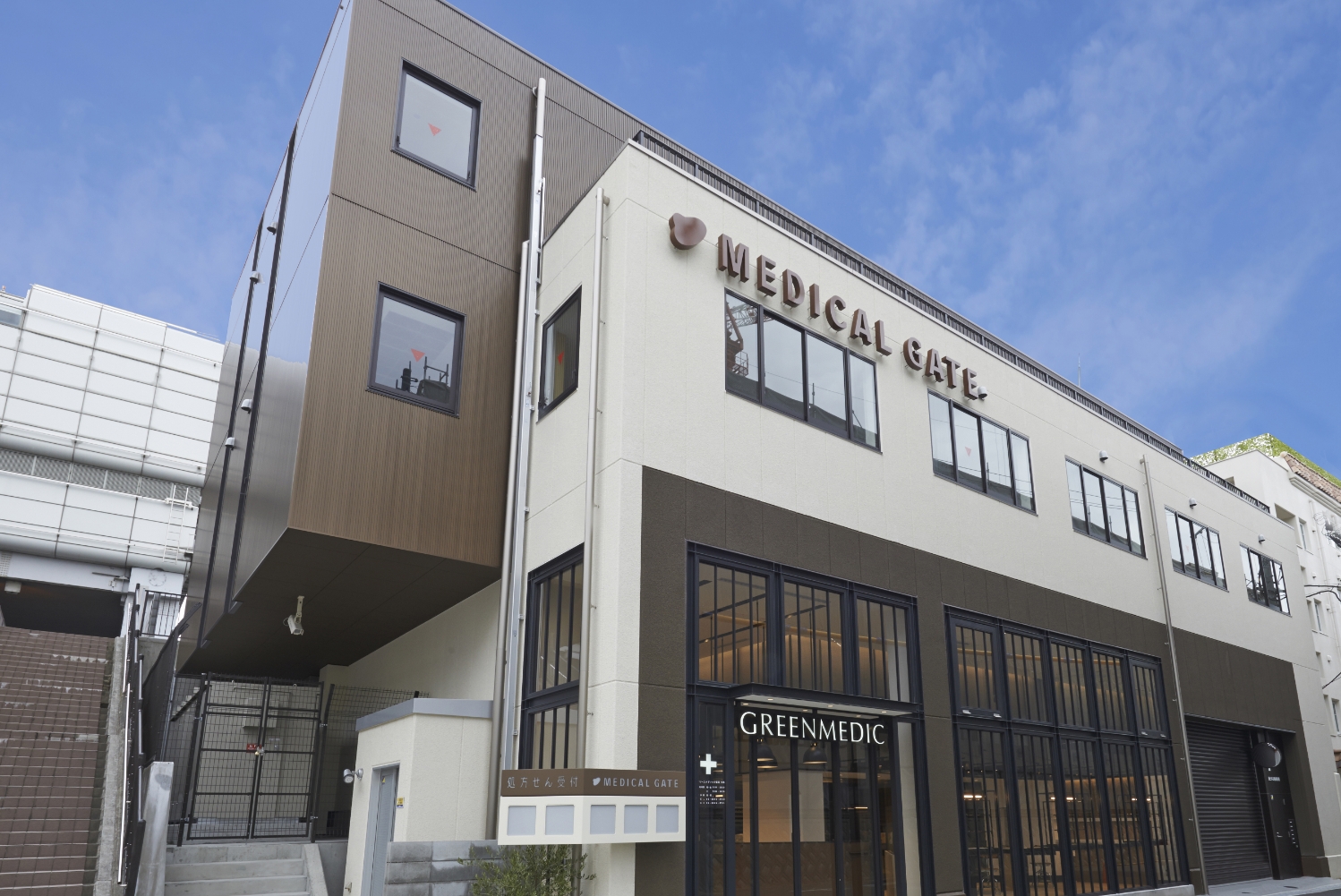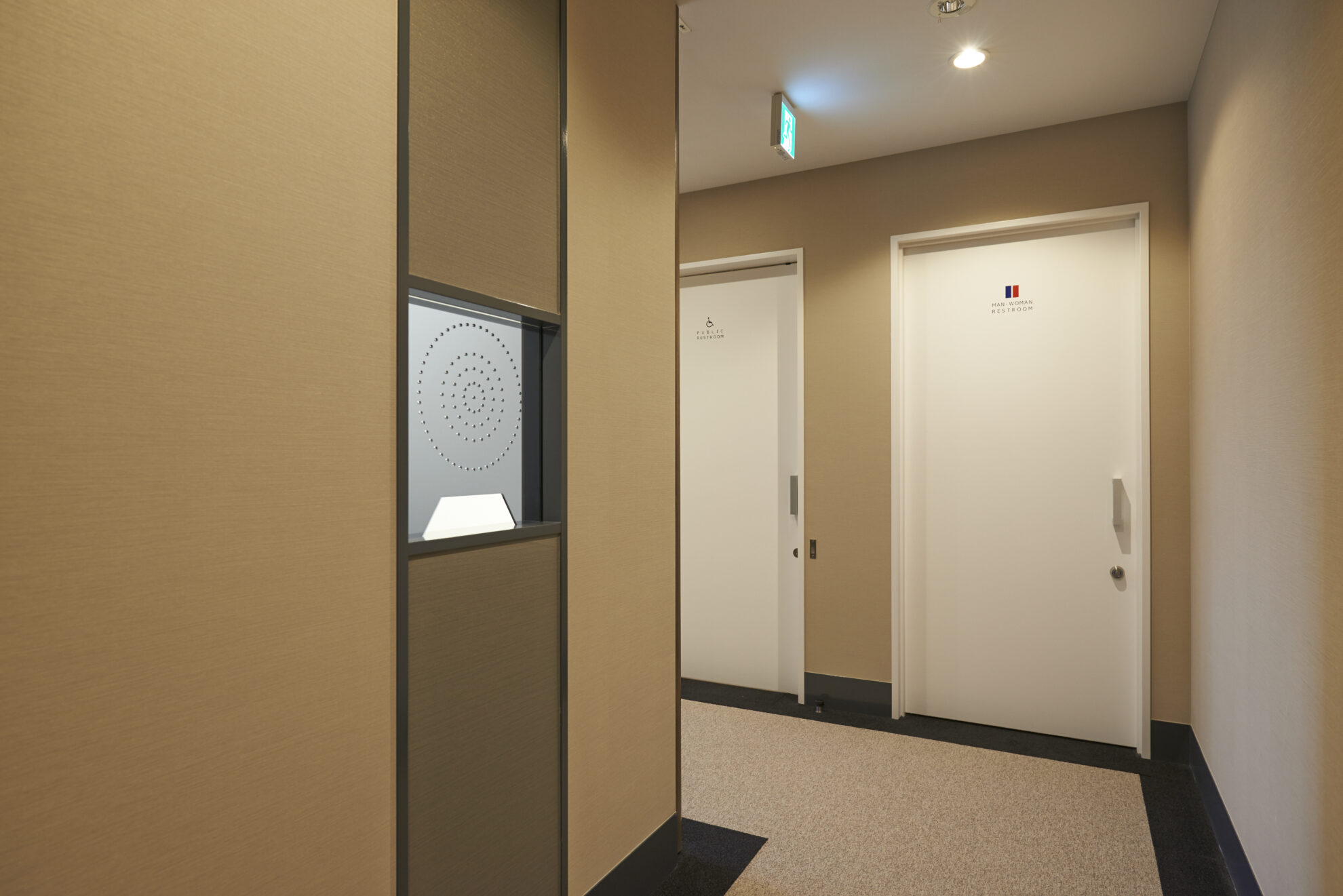- TOP
- Product
- User Reports
- Green Pharmacy, Shoji Store (Osaka Prefecture)
Green Pharmacy, Shoji Store (Osaka Prefecture)
Interviewee: Kouzo Tada, President of Green Medic Co., Ltd.
Interview Editor: Kazuaki Mori, Manager of Sales Planning Department, Yuyama Co., Ltd.
Document Composition by: Emika Matsuo, Sales Planning Department, Yuyama Co., Ltd.
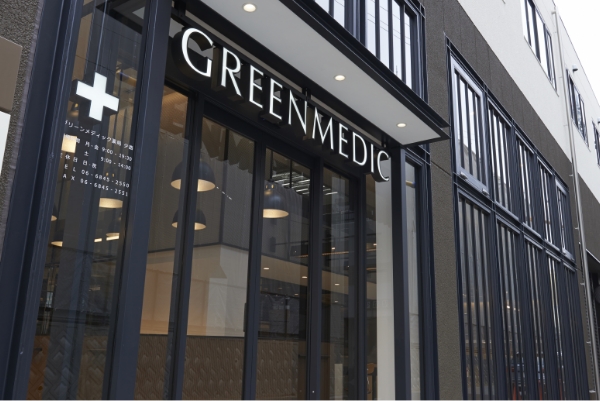
The First Vial Filling Machine in Japan! Creating a Relaxing and Cutting-Edge Pharmacy
Dispensing Machines and Equipment (EV-54 Vial Filling Machine, etc.)
About the Pharmacy
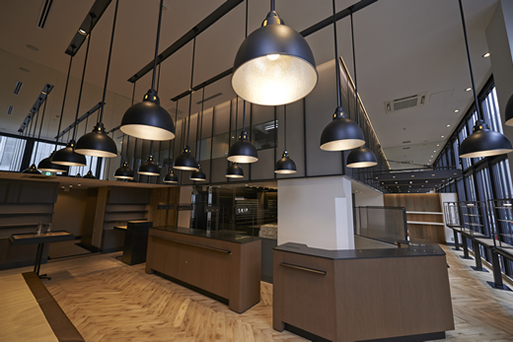
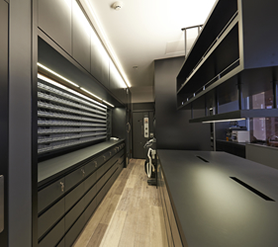
The Shoji store was designed as a medical mall with a black-based color scheme that visually departs from all the other Green Medics stores. The creative design reinvents conventional notions of a pharmacy.
Right, I didn’t want to simply follow other medical institutions when creating this store. Instead of looking to other medical institutions, I focused on the community as a whole and created a pharmacy where people can visit, even if they don’t have a prescription. The aim is to provide infrastructure that supports the general health of people in the Midorigaoka and Higashi-Toyonaka areas.
Until the previous store, I was conscious of creating a pharmacy that flowed with the atmosphere of a hospital. Patients examined at the hospital come into our pharmacy with the cleanliness and quietness of the hospital still in their minds. That of a hospital, not a general clinic or medical practitioner. So, I was focused on the image of a pharmacy as a trustworthy medical institution with the same plain white walls, carpeted floors that prevent dust from rising, and open spaces as a hospital.
However, conventional pharmacies are not places you want to go to. I felt there was no “want” for people to go out of their way and visit the pharmacy. Therefore, I wanted this store to be a pharmacy that people would call into on their way home, even if they don’t have a prescription. Fortunately, we’re located right in front of the station, and that’s how I came up with the idea.
Before we can offer medication treatment, we need to get people in the door. We need to create a pharmacy that people want to drop in and visit unintentionally, even without a prescription. For example, we provide products other than pharmaceuticals, such as daily necessities or supplements, and offer simple tests that can be done in a pharmacy. I came to choose the black-based color scheme while trying to figure out the most appropriate place for these items and services. I needed to create an appropriate space not only for treating illnesses but also for treating people before they become ill. This called for a paradigm shift.
The conventional, white-based colorings are expansive which creates a halation effect around the various colors of medical products and makes the store appear cluttered. Black, on the other hand, absorbs the disparate colors and calms the atmosphere. The black in the interior reflects Japan and representative notions of “harmony” through its association with the traditional black ink used in calligraphy.
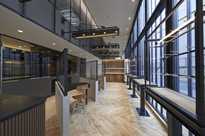
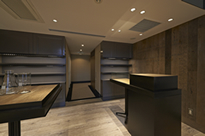
This area has been relatively affluent but many new apartment buildings being built, from my understanding. I assume you are creating your store in anticipation of this.
Yes, there are many wealthy people here. So, what are attributes seen in affluent populations? I think it is knowledge. I believe that when people have knowledge related to health, they naturally become more interested in health and become more conscious of preventive medicine as well as treatment. I aim to be a pharmacy where such people can come without a prescription.
Also, the local community is characteristically comprised of two key groups: baby boomers in their 60s and Millennials in their 30s, which I see as our main target group. The people in their 30s tend to be family orientated with a stronger interest in organic products. For this reason, I chose a wood and steel combination instead of aluminum in the design. The black color is a soothing matte black, not just a standard black. I also used carpet and calming wood flooring instead of the usual tiles. This succeeded in creating a quiet space with limited noise from footsteps.
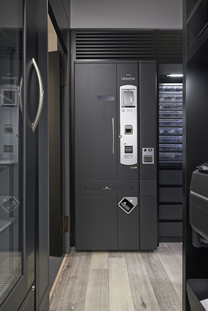
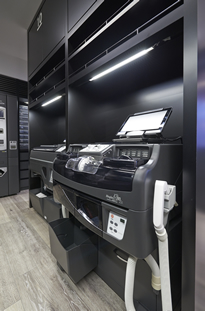
On that note, can you tell me about your customer services and ways you have improved staff operations?
The main theme is offering appropriate information. Conventionally, I think many pharmacies fail to provide the appropriate information. Visiting patients have a range of illnesses and unique circumstances. Despite this, many pharmacies fill a prescription with the same single operation of preparing, evaluating, and giving medication instructions regardless of whether the prescription is for a patient with a cold or someone undergoing cancer treatment. I believe this approach is limited.
Specifically speaking, some patients want a detailed explanation whereas others don’t. From the pharmacy’s side, the degree of explanation will differ depending on the condition (disease). At our store, we use a “Skip the Line” system which has a dedicated counter for patients who send their prescriptions via the Do app and want priority receival of medication.
Most patients using the Skip the Line app favor speed and don’t want detailed explanations, so it’s good for our younger trainee pharmacists. However, what about patients for medications with side effects who need careful monitoring? In short, I instruct my pharmacists to respond to patients based on their illness and needs, and to adapt their manner of speech on a case-by-case basis.
The Ministry of Health, Labor, and Welfare requires confirmation before dispensing, but I think we also need to determine the type of operations and how we provide prior confirmation. This, I believe, leads to the appropriate use of information.
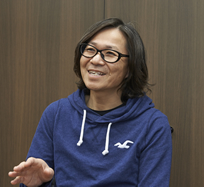

I see. Conceptually the word “individual” appears to be more appropriate than “customer” (or “patient”). It seems you are offering people a novel system and a choice by reinforcing both sides with high-touch elements.
That’s correct, each patient has different needs and wants. We also adopted Sony’s harmo electronic medicine notebook technology into our pharmacy medication card which we hand to all our patients. We use a tablet-type terminal to explain the medications to our patients and when they hold the card up to the reader, it displays their medication records directly on the tablet. This means we can start preparing the medication while explaining the prescription details on the tablet. Waiting time is still a waste, even in a comfortable environment. So, I try to make processes as efficient as possible.
As for dispensing medication, most patients see this room as no more than a black box, and therefore I think it is best to open it up so that patients can see what’s going on behind the scenes. This way people will be more content to wait. For generics, if patients request generic medication during the explanation, we make the change. However, we do not use generics if there is no clear cost-benefit. For generic brands that we have adopted, we ask the patient to wait five or ten minutes while we change their medication to the generic version.
About the EV-54 Vial Filling Machine
Now, our company has extensive experience in international exports for vial dispensing machines, but none in the domestic (Japan) market. From my understanding, this is the first time for tablets to be dispensed in vials within Japan. What was your aim for introducing it?
My key aim in introducing the vial filling machine is to restore the concept of delivering medications. Traditionally, pharmaceutical companies shipped drugs in bottles, right? That changed over to PTP sheets which are more convenient to carry. While convenient, there was one thing that was left out. That is the drug information, such as dosing precautions and times. Medication and related information must come as a set.
PTP sheets are often handled carelessly. If you think of the difference between a vinyl record and a CD, for example, we usually handle vinyl records carefully, making sure not to drop them. But when it comes to CDs, we tend to toss them around. PTPs are like that. While PTPs have stability, preciseness, and convenience, people tend to cut them into individual pieces and end up forgetting which medication is which. Even when we tell them not to cut it, they often do so after they get home. And if they put them in the same can, they cannot tell the medications apart or confirm the dosage.
For this reason, I think putting medications in the same bottle with a label makes it easier to confirm the information. Also, if you print a QR code on the label, people can search for the details on the net when they want to know.
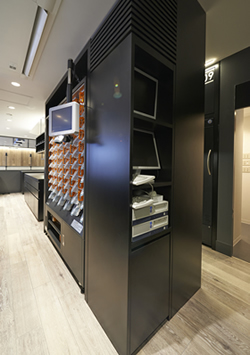
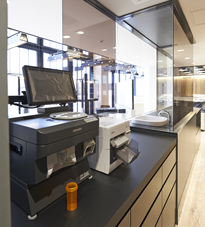
It could be called a kind of media. In the sense that medication is not just a tangible item in isolation, but a combined product comprised of the physical item and the information.
Exactly, it is media. To go one step further, the label can also be seen as an advertising medium for associated pharmaceutical companies to add PR-related material to the drug being dispensed. The method of introducing a vial dispensing machine and dispensing tablets in bottles offers new design possibilities, but above all it has an affinity with the presentation of information.
There is plenty of reason to expect that vial dispensing will be widely embraced from both a design and an information perspective, right?
I think so. I predict it will be well received. The first reason is the demographics of the area I mentioned at the beginning and, more importantly, the ability for patients to have choices.
The second reason is that our main store target market is patients in their 30s. Younger people in their 30s aren’t convinced by old theories of how things should be done, so we must provide them with a platform that gives them choices.
Vials are one option for medication delivery. When giving patients instructions on the tablet device, I explain the advantages of vials and then let them choose which delivery form they prefer. I want a pharmacy where patients are proactively involved in decisions.
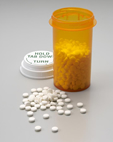
Your pharmacy is ahead of its time, so I’m excited to see what will emerge. Finally, what kind of responses did you get from pharmacists at your store regarding the introduction of the vial dispensing machine?
I will have to wait and see how it works, but I have high expectations for this new venture.
Even I have high expectations. Please let me come back and interview after the pharmacy has been open for a while.
Definitely. I would love to give you some feedback. Thank you for your time.
Green Pharmacy, Shoji Store (Osaka Prefecture) is such a place.
A store that people visit even without a prescription.
Conveniently located one-minute walk from Shoji Station on the Osaka Monorail with a stylish exterior resemblant of a brand name store. Once inside, the matte black and natural wood interior creates a relaxing ambience that is not too bright, nor too dark. Alongside pharmaceutical products, the store carries a range of daily necessity items such as supplements, disinfectants, and sprays as well as blood and influenza testing facilities. The innovative and welcoming features make it easy to drop by without that clinical pharmacy feel. We are looking forward to seeing the kinds of people that come through there when it opens*.
(※Interview date: March 9, 2015. Open date: April 1, 2015.)
Information as of March 2015
